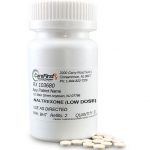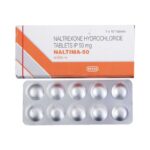Low Dose Naltrexone Benefits

What Is Low Dose Naltrexone?
Naltrexone is an opiate antagonist that is taken orally to block opioid docking sites (receptors) on cells. It is approved by the U.S. Food and Drug Administration (FDA) for the treatment of addictions to opioids and alcohol.
Low Dose Naltrexone (LDN) is a competitive opioid receptor antagonist. At the standard dose, naltrexone blocks the effects of both the endogenous opioids, which are endorphins, and pharmaceutical opioids. LDN is a pure antagonist, which is vital to know as a lot of people think it is a controlled medicine, narcotic, or opioid.
Naltrexone is used as an off-label treatment in low doses for several chronic immune-modulated disorders in many countries. There is a wide range of different conditions that can be treated with low dose naltrexone, including any of the following:
• Autoimmune cardiomyopathy
• Diabetic myopathy
• Multiple sclerosis
• Eczema
• Psoriasis
• Cushing’s syndrome
• Crohn’s disease
• Hashimoto’s thyroiditis
• Diabetes mellitus type 1
• Hypothyroidism
• Celiac disease
• Inflammatory bowel disease
• Ulcerative colitis
• Hepatitis C
• Epstein Barr virus
• Vitiligo
• HIV
• Lyme disease
• Certain types of cancers
• Multiple myeloma
• Guillain-Barre syndrome
• Kawasaki’s disease
• Autism
• Anxiety disorders
• Lupus
• Post-traumatic stress disorder
• Emphysema
• POEMS syndrome
• Fibromyalgia
• Rheumatoid arthritis
• Vasculitis
• Endometriosis
• Infertility
• Polycystic ovary syndrome
• Traumatic brain injuries
How Does It Work?
Low Dose Naltrexone (LDN) works by boosting endorphins, the peptides produced in the brain and adrenal glands that relieve pain. It modulates the immune system and enhances the sense of well-being. Research has shown that when LDN is taken at bedtime, it attaches to opioid receptors, temporarily blocking endorphin attachment. This signals the body to increase endorphin production, which helps orchestrate the activity of stem cells, macrophages, and other immune cells. This leads researchers to believe that LDN may be critical in helping the body fight disease.
In these lower doses, LDN can bind to your brain’s endorphin receptors and last for up to six hours before wearing off.
Low Dose Naltrexone Benefits
Opioids are effective in reducing pain, but their use comes with a very high price for the patient: drug dependence. The opioid addiction crisis made global headlines as doctors scrambled to find an alternative to these harmful drugs. That’s where low-dose Naltrexone comes to the rescue.
LDN is not addictive like opioids and is not a steroid like prednisone either. Prednisone helps with inflammation, but steroid medications shut down your immune system and leave you vulnerable to infection, which can be very dangerous for anyone who already has an immune disorder.
In comparison, LDN works by balancing the immune system rather than suppressing it. LDN inhibits T Cell Growth Factor, which is responsible for increasing the T cell count, and thus inflammation, in the body.
It’s the increased amount of T cells that leads to inflammation in people with a disorder like arthritis, which is why LDN has such a high success rate among the arthritic population. Plus, in addition to taking it orally, you can break open capsules and apply the contents directly to areas of pain, making low-dose Naltrexone easy to use and area-specific.
LDN is also being investigated as a potential treatment for migraine headaches. People who suffer from migraines often exacerbate their symptoms by overusing medications and end up with a medication overuse headache, a painful cycle of migraines, over-medicating, then having an MOH repeatedly.
Incredibly, very small doses of LDN are needed to treat the pain. Lower doses work better than higher doses, hence, the term “low dose” Naltrexone. It can be compounded for customized dosing according to your doctor’s prescription at a special kind of pharmacy that provides a drug compounding service.
Safety and effectiveness
There has been limited clinical study of low-dose naltrexone (LDN). Most of the studies completed have been small non-randomized controlled trials. Of the studies completed, many show LDN to be safe and easily tolerated but few show improvements to the disease process itself. Some studies have demonstrated an improvement in quality of life, particularly in pain and fatigue management. Because the evidence to support the effectiveness of LDN in treating most of the conditions is lacking, it is not considered a disease-modifying therapy. If you are interested in taking LDN, it is important for you to have a discussion with your healthcare provider that includes possible effectiveness, side effects, and risks.
Side effects and risks
Naltrexone can cause liver damage, but it is most often seen at high doses and not the low dose. Other side effects include nausea, vomiting, abdominal pain, decreased appetite, constipation, headache, fatigue, insomnia, dizziness, depression, and anxiety. Serious side effects that should be reported right away to a healthcare provider include confusion, hallucinations, blurred vision, and severe vomiting or diarrhea.
You may find useful information on What to Avoid When Taking Low Dose Naltrexone





